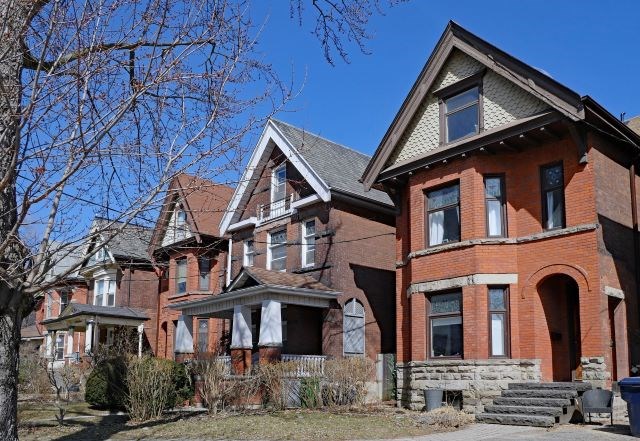Newmarket is putting the finishing touches on its neighbourhood compatibility study, which will ultimately help to ensure all residential infill construction is in keeping with the esthetic and feel of the town's many distinct neighbourhoods.
A freeze on new home building on single or vacant lots and most additions to existing homes in many established and emerging areas in Newmarket came into force on Jan. 21, 2019 to address residents' concerns about so-called monster home construction that is not compatible with the look and feel of existing houses in the town’s mature neighbourhoods.
Municipal staff have been working for more than a year to assess each of the different neighbourhoods in town and come up with tailored rules for each to help maintain the local character, while still allowing for new development. The final product will help the town draft new policies to guide infill development that is in line with a neighbourhood’s identified unique characteristics.
Staff presented their latest draft of the study, including some changes made after feedback from councillors, developers, property owners and citizens, at a committee of the whole meeting Monday, Oct. 26.
"We are trying to find a balance to provide some opportunities for renewal and development, while also protecting the integrity of the community these new homes come into," Mayor John Taylor said.
The changes outlined for council included increasing the flexibility of the new rules after feedback revealed potential problems if they were enforced too strictly.
Senior planner Phoebe Chow explained, for instance, that the list of defining characteristics for each neighbourhood could be "overly restrictive" on certain developments, so they will be guidelines rather than policies within the town's official plan.
"We believe these lists are helpful for giving an idea of what the character area is like, but we acknowledge some — such as 'continuous sidewalks on both sides of the street' — may not be applicable to the development of some individual properties," said Chow.
"So we feel it is more appropriate to list these characteristics in the introduction section of each neighbourhood to set the context. But they will not form actual policies inside the official plan."
Another proposed change is to relax the requirement that new buildings adhere to a specified angular plane so that they are in keeping with other homes in the neighbourhood. The policy is being clarified that this only applies to buildings that are more than four storeys tall and are immediately adjacent to a residential area.
The interim zoning bylaw passed in 2019 specifies that current applications for building permits are exempt from the new rules and will not have to be revised.
Property developers had some concerns about how that policy impacts zoning bylaw amendment applications, and the language of the draft is being changed to clarify that issue, too.
Municipal staff also proposed technical changes to setback requirements, particularly for unusually large and oddly shaped lots.
They also want to change the bylaw so that setback requirements are calculated using the actual height of the home and not just the number of storeys.
Lastly, an exemption is being made so that homes with first floors with unusual heights can do repairs and renovations without having to raise or lower their ceilings to comply with the rules.
The reception of the plan as it currently is written was cautiously optimistic.
Nancy Fish, who represents her neighbours along Millard Avenue, has been heavily involved with the study since it began. She has been pushing to make sure the large lots, mature trees, and historic homes that define her neighbourhood are not changed.
"This study is very important to us. I am very pleased and proud that the Town of Newmarket initiated this important study," Fish told the council in a virtual deputation Monday.
But Fish also called for more for more clarity on setback requirements for larger properties like those in her neighbourhood. She also wants an outright prohibition on lot-splitting, at least in her neighbourhood.
Taylor also expressed concern that some of the language in the study was too broad. He said he was concerned it might be used by lawyers to force through projects that do not fit with the rest of the neighbourhood in spite of the rules.
"(The study) says that development should respect the character of the development area ... But it describes the historic area such as the downtown as having 'varied lot types, varied front yards, varied building heights, varied vehicle access, and varied parking configurations," said Taylor.
"It says developments have to respect that, but I don't know how you interpret that. In my experience, people who challenge things at the Local Planning Appeal Tribunal or the Ontario Municipal Board love this kind of language.
"They'll just say they are more variation."
Staff will work on another set of changes to make that language less vulnerable to challenge and bring it back to council sometime in the coming weeks.
